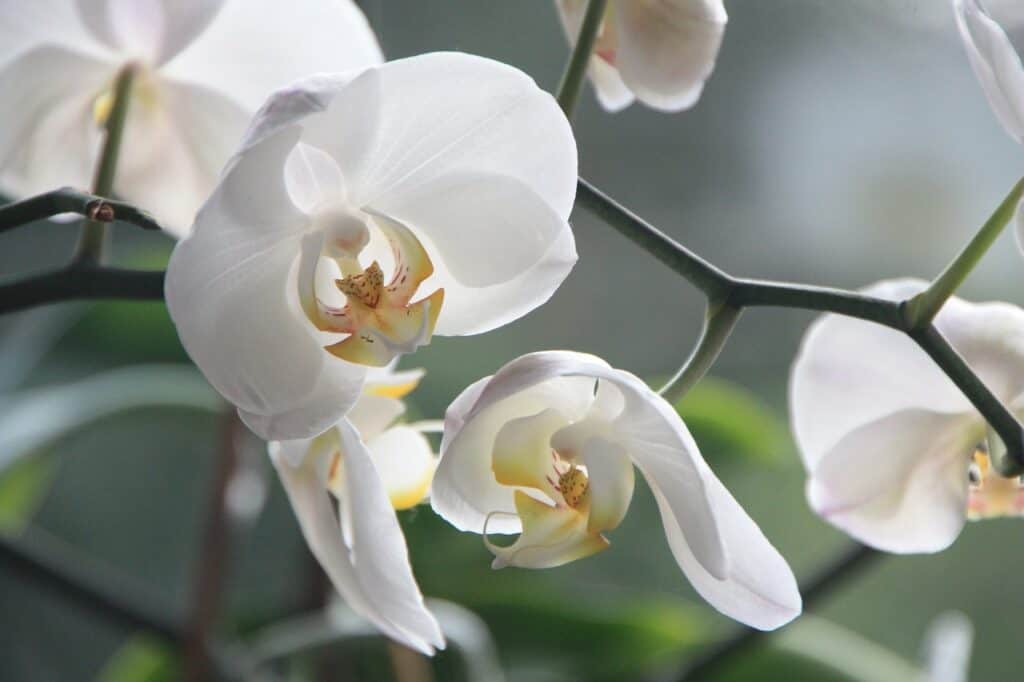Orchids are a popular choice of indoor plants, appreciated for their elegant blooms that last for weeks. However, even with the best care, they can wilt, leaving you wondering what went wrong. Unfortunately, wilted orchid flowers can be a sign of various issues that need to be addressed before they can be revived. In this post, we’ll cover the essential tips to revive wilting orchid flowers, ensuring your plant stays happy and healthy.

Why Are Your Orchid Flowers Wilting?
The first step to reviving your wilting orchid flowers is to understand the common reasons why they may be wilting. Some of the most common causes include:
– Overwatering or underwatering: Orchids are sensitive to their watering needs, and getting the frequency and amount wrong can cause their blooms to wilt.
– Incorrect potting mix: Orchids require a specialized potting mix that allows for proper drainage and air circulation. If you’re using regular potting soil, your orchid may be struggling.
– Lack of humidity: Orchids need a high level of humidity to thrive, and low humidity can cause their flowers to wilt.
– Improper light: Orchids need a certain amount of light to produce blooms, but if they’re exposed to too much sunlight or not enough, they can wilt.
– Pest infestation: Pests such as spider mites, scale insects, and mealybugs can cause your orchid to wilt and die.
How to Care for Wilting Orchid Flowers
If your orchid’s potting mix isn’t appropriate, it can’t absorb water or drain properly, causing the roots to rot and the flowers to wilt. Therefore, it’s essential to choose a proper potting mix for your orchid. There are many orchid-specific potting mixes on the market that contain bark, sphagnum moss, coconut coir, and other ingredients that allow for adequate drainage and aeration. Also, ensure that the container you choose has adequate drainage holes.
Water Your Orchid Flowers Correctly
Watering orchids is a delicate process that requires accuracy and a bit of patience. Their potting mix should be partially soaked, not entirely saturated, as any standing water around the roots can lead to fungal diseases and pest infestations. Always water your orchid in the early morning to allow sufficient time for the water to evaporate from the plant before sunset.
How to Revive Wilting Orchid Flowers
Pruning your orchid is a vital step in reviving your wilting flowers. Remove all dead or dying stems, leaves, and flowers, as they attract pests and diseases, and block sunlight from reaching other healthy parts of your orchid. Also, groom your orchid by removing any dried or wilted roots or leaves that may hinder the healthy ones’ growth.
Provide Optimal Light and Temperature Conditions
Orchids need the right amount of light and temperature to produce and sustain healthy flowers. Most orchids need filtered sunlight, preferably in the morning or late afternoon, as direct sunlight can cause their flowers to wilt. Additionally, keep your orchid at an optimal temperature range of 65-80 degrees Fahrenheit, ensuring it’s not exposed to excessive heat or cold.
Increase Humidity Levels
Orchids thrive in humidity levels of 50-70%, and if the humidity is too low, their flowers will wilt. You can increase humidity levels around your orchid by placing a tray of water near the plant or installing a humidifier in the room.

Prevention is Better Than Cure
Preventing your orchid flowers from wilting is much easier than reviving them. Provide your orchid with proper care and attention from the start. Ensure that you water them correctly, provide optimal light, humidity, and temperature, and fertilize them once a month. Pay attention to any signs of pests or diseases, and address them promptly to avoid your orchid flowers from wilting.
Conclusion
Understanding the reasons why your orchid flowers are wilting is the first step to revive them. Ensure that you provide your orchid with the correct potting mix, water them accurately, groom them, and provide optimal light, humidity, and temperature conditions. Remember, prevention is more accessible than cure, and thus, providing your orchid with proper care and attention from the start will make them less prone to wilting.

